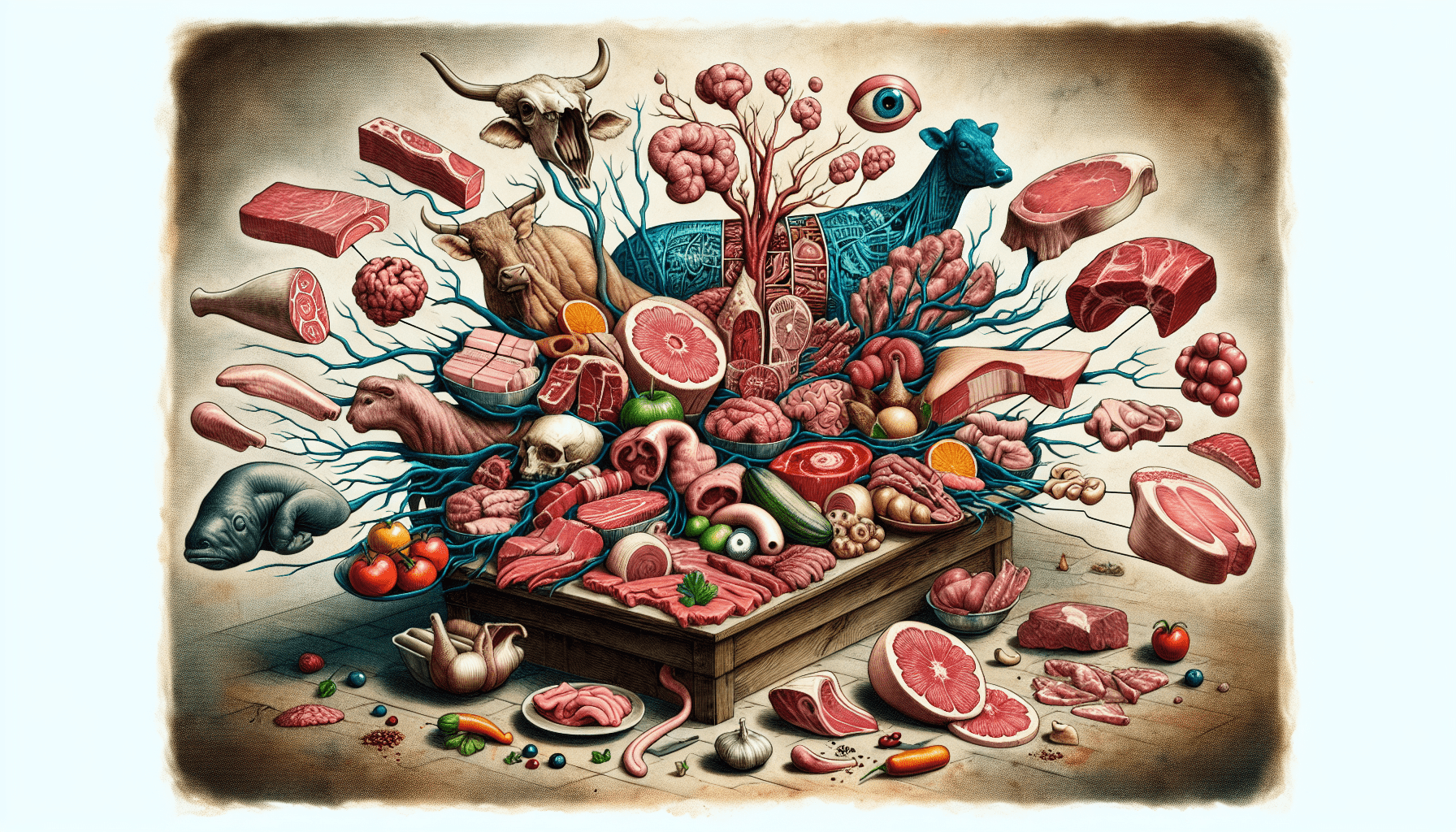Are you ready to embark on a culinary adventure that will not only tantalize your taste buds but also unlock a world of health benefits? Look no further than the carnivore diet and its fascinating practice of nose-to-tail eating. By fully embracing this approach, you’ll not only savor every part of the animal but also reap the rewards of improved nutrient intake and sustainability. Join us as we delve into the advantages of nose-to-tail eating on the carnivore diet and uncover a whole new way to nourish your body.
Understanding the Carnivore Diet
The Carnivore Diet is a dietary approach that focuses primarily on consuming animal products while excluding most plant-based foods. The key principle of this diet is to eat foods that are derived from animals, such as meat, fish, eggs, and dairy, while avoiding or limiting foods that are derived from plants, including fruits, vegetables, grains, and legumes. This unique approach to nutrition is gaining popularity among individuals seeking to improve their health and well-being by optimizing their diet.
What is Nose-to-Tail Eating
Nose-to-tail eating refers to the practice of consuming all parts of an animal when preparing and consuming meals. Traditionally, some parts of the animal, such as the organs, skin, and bones, were often discarded or overlooked in Western diets. However, nose-to-tail eating emphasizes the importance of utilizing the entire animal, from the nose to the tail, to make the most of its nutritional value and reduce waste.
Nutritional Benefits of Nose-to-Tail Eating
One of the main advantages of nose-to-tail eating is the maximization of nutrient intake. By consuming all parts of the animal, you are able to access a wide range of essential nutrients that may be lacking in a more traditional Western diet. Animal organs, in particular, are highly nutrient-dense and provide important vitamins and minerals that are vital for overall health and well-being.
Additionally, nose-to-tail eating ensures that you are getting high-quality sources of protein. Animal proteins are considered complete proteins, meaning they contain all essential amino acids required for optimal bodily function. Including a variety of cuts and organs from different animals in your diet can provide a well-rounded protein profile.
Furthermore, nose-to-tail eating allows you to balance the intake of omega-3 and omega-6 fatty acids. While both types of fatty acids are essential for the body, the modern Western diet often tends to have an imbalance, with an overabundance of omega-6 fatty acids. By incorporating different parts of the animal, you can achieve a more balanced ratio of these fatty acids, which may have a positive impact on inflammation levels and overall health.
Reducing Food Waste
An important benefit of nose-to-tail eating is the reduction of food waste. By utilizing the entire animal, you are minimizing wastage and making the most of the resources available. This aligns with sustainable practices and helps to minimize the negative environmental impact associated with food production and disposal. By adopting a nose-to-tail approach, you are contributing to a more sustainable and environmentally friendly food system.
Exploring Culinary Variety
Incorporating nose-to-tail eating into your diet opens up a world of culinary variety. Each cut and organ of an animal possesses its own unique flavors and textures, allowing you to explore a wide range of taste profiles. By experimenting with traditional and modern recipes, you can discover new ways to enjoy and appreciate the flavors that different animal parts have to offer. This adds excitement and diversity to your meals, making the carnivore diet an enjoyable and dynamic culinary experience.
Honoring Traditional Food Practices
Nose-to-tail eating has a rich historical context that is deeply rooted in traditional food practices. Cultures worldwide have embraced this approach to food consumption for centuries, making use of every part of the animal as a way to honor and respect the animal’s life. By incorporating nose-to-tail eating into your diet, you are not only connecting with your ancestral food traditions but also preserving and carrying forward cultural knowledge and practices.
Enhancing Environmental Responsibility
Adopting a nose-to-tail approach to eating also enhances your environmental responsibility. By reducing food waste and utilizing the entire animal, you are minimizing the resources needed for food production and the negative impacts associated with intensive animal farming. Supporting sustainable agricultural systems and reducing reliance on intensive farming practices contribute to a more eco-conscious and environmentally friendly approach to food consumption.
Varying Nutritional Profiles
Different animal parts contain unique nutritional compositions, which contribute to the overall health benefits of nose-to-tail eating. For example, organ meats, such as liver and heart, are rich in essential vitamins and minerals, including vitamin A, iron, and B vitamins. Incorporating these nutrient-dense foods into your diet can help fill any nutritional gaps and support optimal health and well-being.
Addressing Nutritional Deficiencies
Nose-to-tail eating can be particularly beneficial in addressing potential nutritional deficiencies that may arise on the carnivore diet. While the diet primarily consists of animal products, certain nutrients, such as vitamin C and fiber, are typically obtained from plant-based foods. By including organ meats and consuming different cuts of animals, you can ensure a more balanced nutrient intake and overcome any potential deficiencies that may occur.
Ethical Considerations
Understanding the ethical aspects of nose-to-tail eating is important when adopting this dietary approach. By appreciating and utilizing all parts of the animal, you are respecting its life and minimizing waste. This aligns with ethical considerations, as it promotes responsible and mindful consumption of animal resources. It is essential to approach nose-to-tail eating with gratitude and reverence for the animals that provide us with sustenance.
In conclusion, nose-to-tail eating on the carnivore diet offers numerous advantages. From maximizing nutrient intake and reducing food waste to exploring culinary variety and honoring traditional food practices, this approach to eating promotes holistic well-being and environmental responsibility. By adopting nose-to-tail eating, you can optimize your diet, support sustainable practices, and embrace a more ethical and mindful approach to food consumption.
